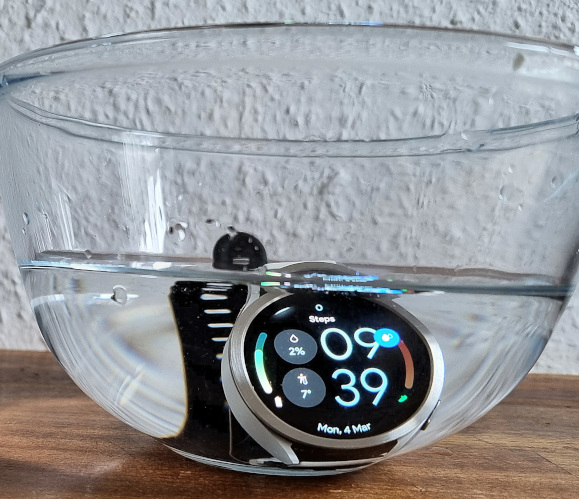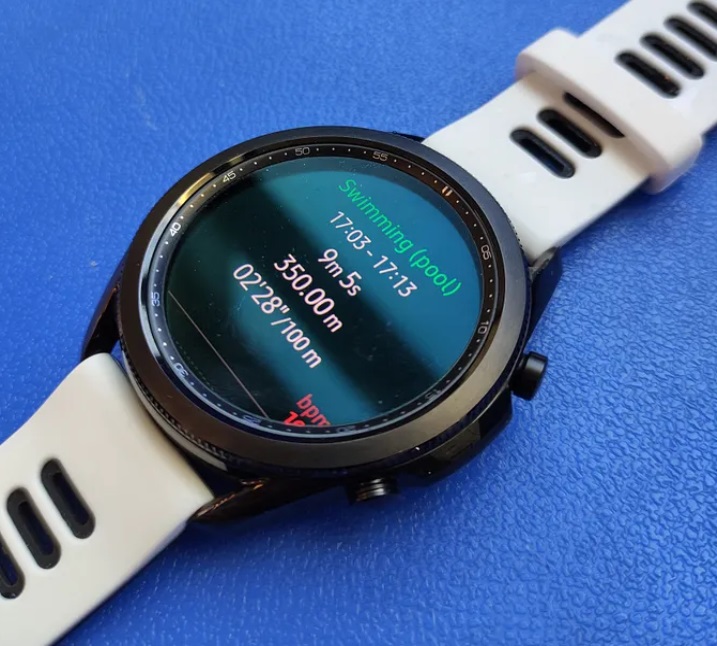Are the Galaxy Watches Really Waterproof?
In theory, there should be a simple answer to this question – either “yes” or “no”.
Unfortunately, the real answer is “it is complicated”. And here is why.
On the paper Galaxy Watches are rated as 5 ATM or WR 50 meters according to ISO 22810:2010.
Samsung says:
Water resistant based on 5ATM rating, which means submersion up to 50 meters per ISO standard.
Many watch enthusiasts and users know that WR rating is very confusing and many traditional watches manufactures used it in … a strange way. As a result, many people not sure if it is safe to wash their hands with a WR50m watch on their wrist.
Access to ISO standards is behind a paywall. However, Wikipedia article makes the following statement about ISO 22810:2010:
This has since been replaced by the ISO 22810:2010 standard, which covers all activities up to specified depth and clears up ambiguities with the previous standard
You see – “all activities up to specified depth”.
Moreover, Galaxy Watch has pretty good swim tracking feature which I really like (I even wrote a separate article about it – “Samsung Health: Swimming Statistic, Calendar and Your Progress Data“). And I’m not alone here – many people use their watches intensively for swimming in different types of water – swimming pools, open water and even in sea/oceans – and have no issues at all – many comments on reddit prove this.

Here is an alternative way to show that Galaxy Watch is water resistant 🙂
Nevertheless, there are negative examples as well. Most of them involve with older models like the Galaxy Active 2. There are three possible explanations for this:
- Older watches had weaker water protection.
- Water protection degrades over time (this is what I read in the Apple Watch manual) and newer models have not been in use for that long yet.
- Both of the above together.
Either way, if your watch is damaged by water inside – you have very little chance of getting support from Samsung. It usually refuses to repair such watches under the warranty. And this is a very disappointing situation.
In practical terms, this means that if you have a new watch model, that has not been opened (refurbished units most likely have) you should be fine to swim with it in normal swimming pools – the risk of damage to your watch is low. But this risk is entirely at your own.
After swimming you should better to rinse the watch under tap water – as the user manual says.
For more details and for other water activities it makes sense to read the user manual which can be found online. For the Galaxy Watch 6 it says:
Do not expose the device to water at high pressure.The device is not impervious to dust and water damage in any situation. It is important
that all compartments are closed tightly.Not intended for scuba diving. Avoid excessive, sudden temperature changes, and high velocity activities. Falls and shocks may breach integrity.
After use in sea water, rinse in fresh water and dry device. Despite this classification,
your device is not impervious to water damage in any situation. It is important that all
compartments are closed tightly.Whenever your device gets wet, dry it thoroughly with a clean, soft cloth. Failure to rinse the device in fresh water and dry it as instructed may cause the device to suffer from operability or cosmetic issues.
- Do not expose the device to water at high pressure.
- If the device is dropped or receives an impact, the water and dust resistant feature of the device may be damaged.
PS: I also read that the Galaxy Watch may only be used in water no longer than 30 minutes. This is not correct. The confusion, most probably, came from the WR certification test conditions, which were described in the user manuals of older models. I have seen this myself as well. I cannot find such information in manuals for newer models.






